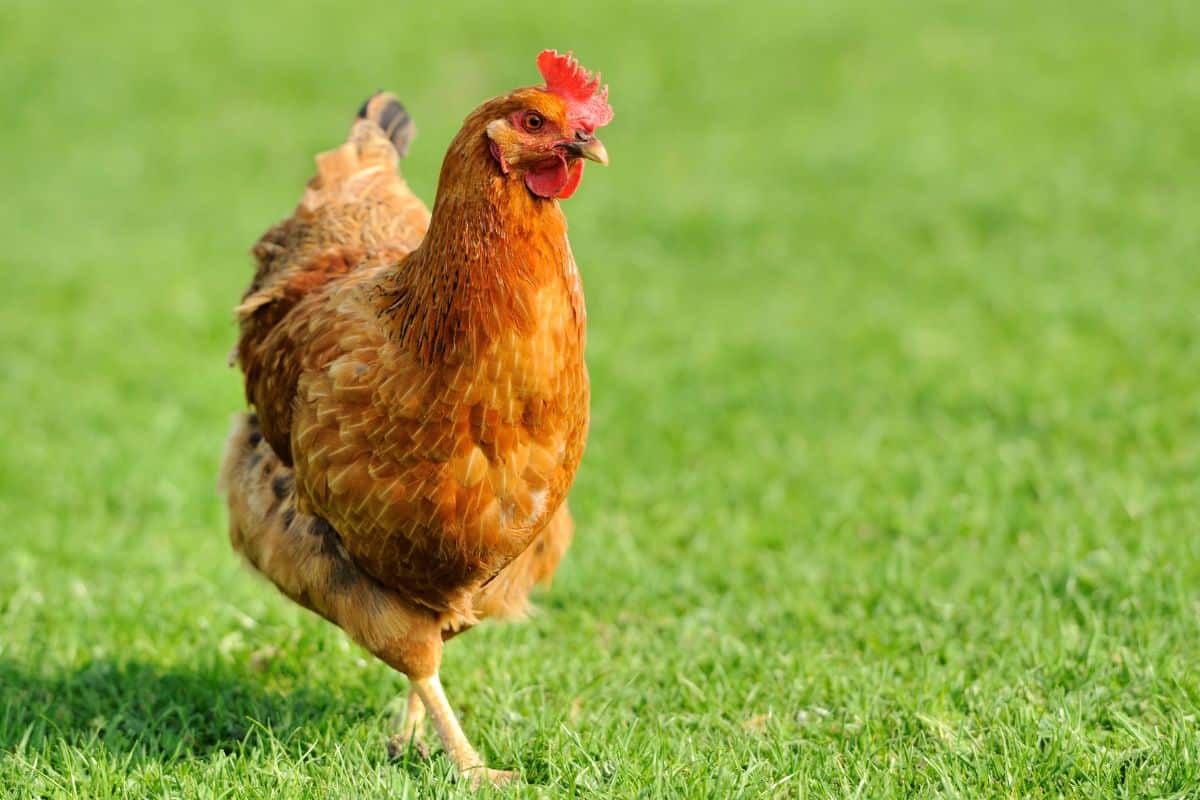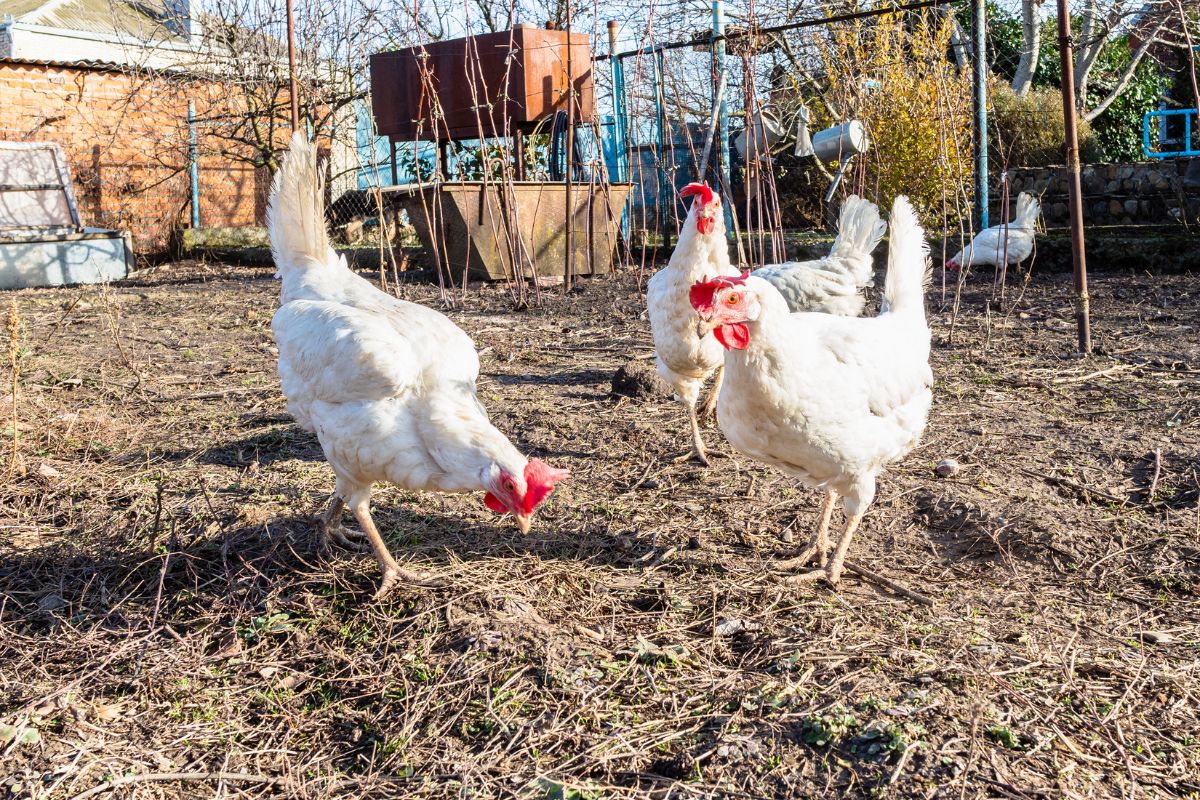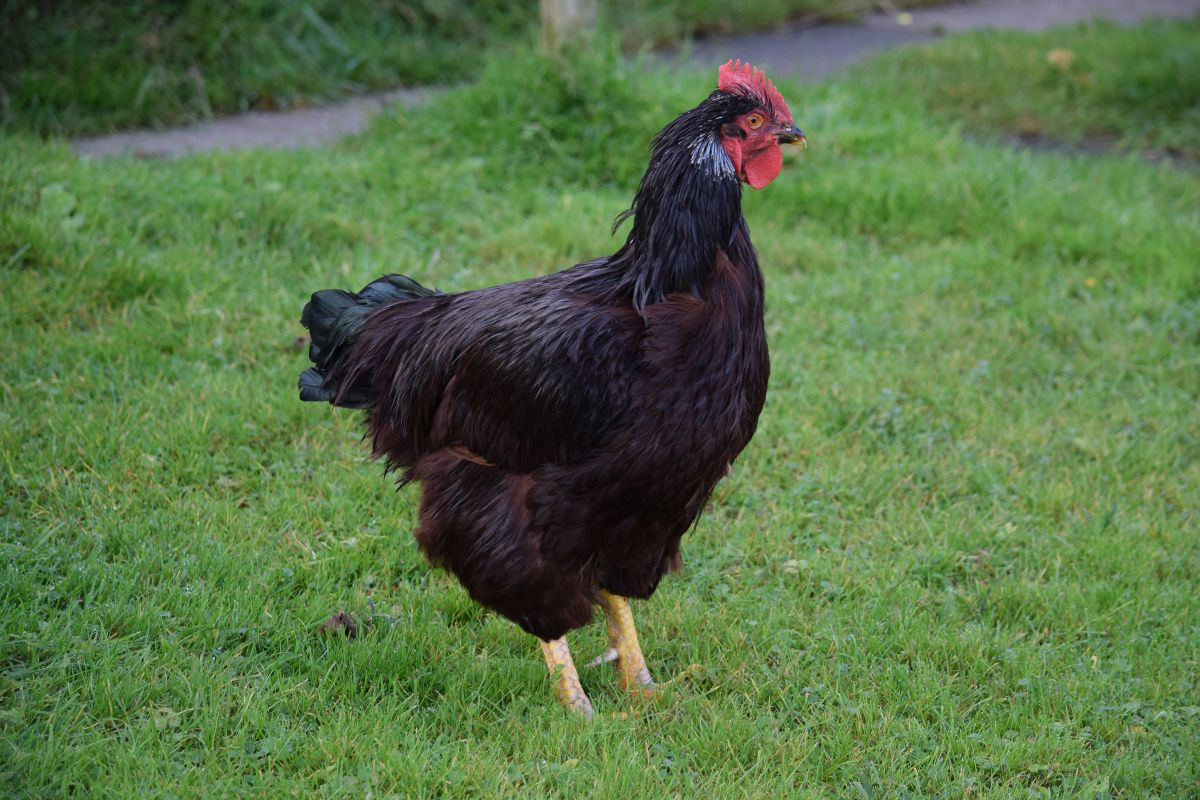Chickens can be a new experience for anyone who is used to dogs and cats. While you see dogs panting and cats cleaning themselves, you may wonder, do chickens have tongues? This question is a natural inquiry as it is not something you can quickly see from looking at a chicken.

So, do chickens have tongues? Yes, they do. This part of their anatomy is integral for eating, tasting, digesting food, preening, and communicating. Although it may be difficult to see their tongues, they are there and extremely useful.
Contents
Chicken’s Tongue Details
Naturally, a chicken’s tongue will be slightly smaller than its mouth to sit easily within its top and bottom beak. The tongue sits in the bottom portion of the chicken’s beak and is the same shape. Although a chicken’s tongue is not very big, it has interesting attributes that differ from other animals.
Chicken tongues are tapered and come to a point at the front, with tiny barbs, or papillae, along the surface to help break down food particles for proper digestion. This texture is similar to a cat’s tongue.
The tip is pointy and sharp and contains a lingual nail, which aids in grasping bugs and other food items. This hard tip is slightly flexible and acts similar to a spoon. It develops as the protein keratin fills the cells to create the lingual nail, feathers, and toenails.
The tongue of a chicken is typically pink and will match the inside of its mouth, although different breeds may have lighter or darker pink hues.
The Uses of a Chicken’s Tongue

A chicken’s tongue is vital for its existence. Without it, chickens aren’t able to:
- Eat
- Digest food
- Preen themselves
- Communicate with other chickens
Eat and Digest Food
A chicken’s useful tongue can grab small pieces of food, break them into digestible sections, and push them down to the back of its throat for easy swallowing.
Although a chicken’s tongue does not contain the same tastebuds as humans, it can still taste sweet things, like melon and berries. However, chickens cannot taste spicy or salty items, and adding salt to their food is not recommended.
Preening Themselves
The tongue of a chicken is essential as part of the preening process. First, these birds will use their beak to pinch at the base of their feathers where their preen gland sits. Next, they use their tongues to distribute the gland oil throughout their feathers.
Preening is critical for keeping their feathers resistant to water and providing the insulation they need when the weather gets colder.
Communicating With Other Chickens
Tongues are vital for creating different sounds, including clicking, chirping, and more. A chicken with a tongue problem can not communicate with others effectively. Hens will call to their young, while roosters will warn their ladies of danger or if there is a new food source.
The Takeaway

Yes, chickens have tongues and are essential to daily life, even if you cannot see them by glancing at these birds. Without a healthy tongue, a chicken will not eat properly, preen, or communicate with its feathered friends.
